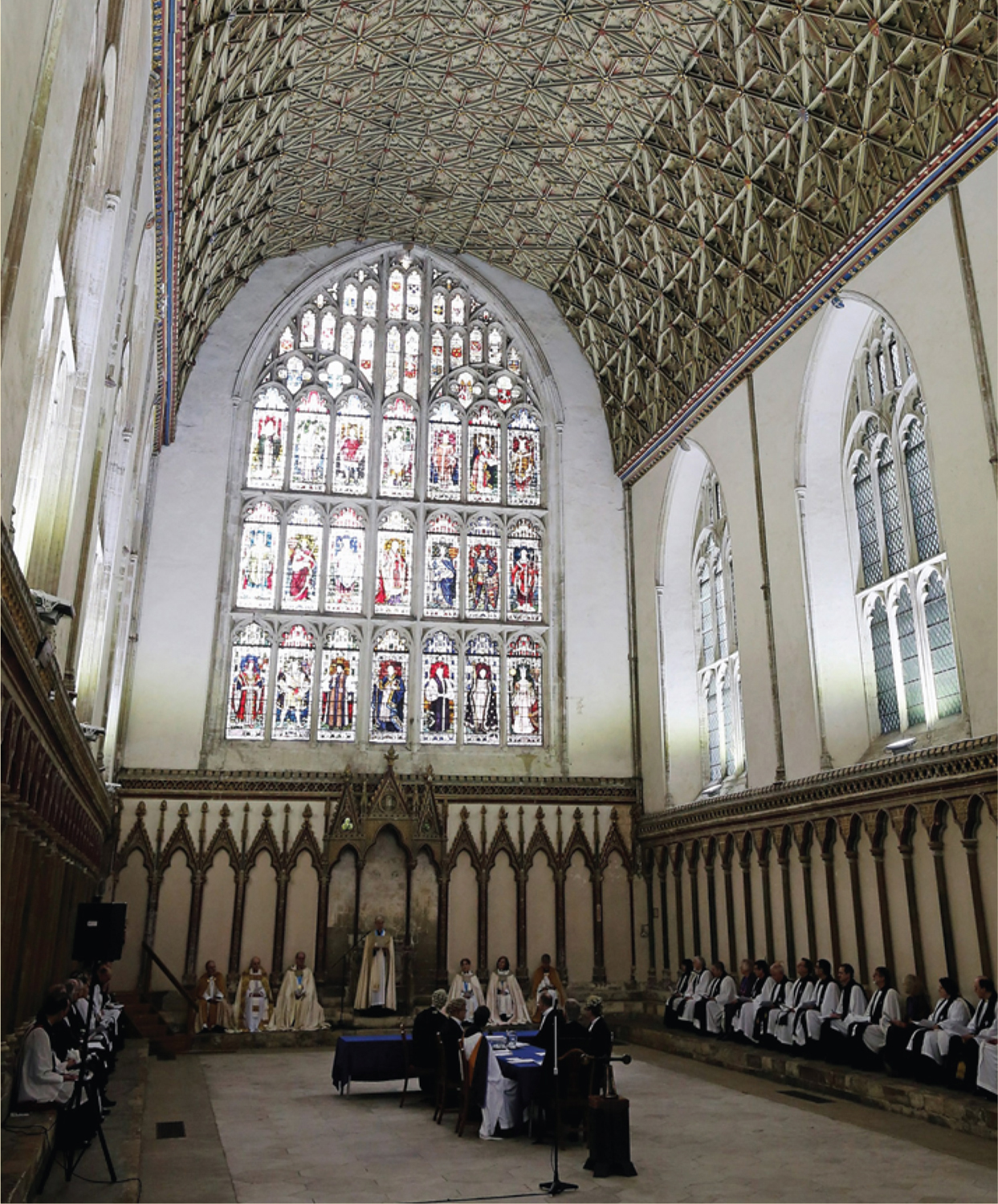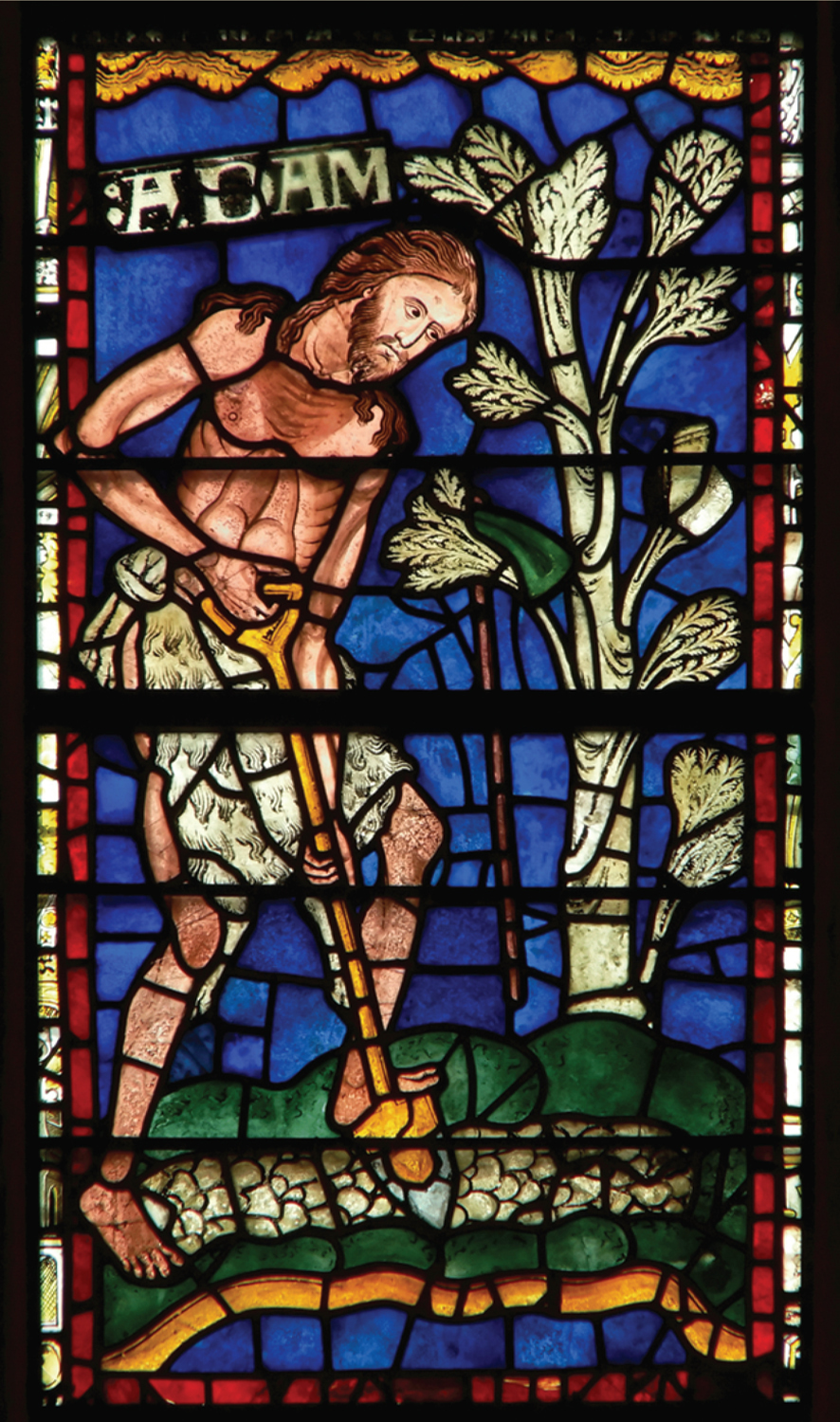Visualizing History: “Targets of Puritan Reform”

Partial Interior View of Canterbury Cathedral SOURCE: Dan Kitwood/Getty Images.
Since medieval times, Christian churches throughout Europe used magnificent architecture and stained glass to display the majesty of the Almighty, as illustrated by the photo from the interior of Canterbury Cathedral in England.
Stained glass images like the one from Canterbury of Adam shown here, illustrated Bible passages for the multitude of illiterate worshipers. Adam, for example, dramatizes the story of God’s creation of man and, after Adam sinned, God’s consignment of Adam to toil to bring forth abundance from the earth.
Originally a Catholic church, Canterbury Cathedral became the headquarters of the protestant Church of England when King Henry VIII—shown at the left of the panel of three figures —launched the English Reformation and declared the Archbishop of Canterbury the religious head of the Church of England. Henry appointed Thomas Cranmer—the second of the three figures in the panel—Archbishop of Canterbury in 1532, and Cranmer led the new Church of England to create distinctive non-Catholic doctrines and religious rituals, such as reading from the Book of Common Prayer. Queen Mary, a Catholic, had Cranmer burnt at the stake for heresy in 1556.

Adam SOURCE: Canterbury Cathedral, Kent, UK/The Bridgeman Art Library.
Almost eighty years later, King Charles I sought to repress the Puritan challenge to the Church of England, and in 1633 appointed William Laud—the figure on the right of the panel—Archbishop of Canterbury. Laud persecuted Puritans for deviating from the orthodox forms of worship of the Church of England, which the Puritans protested as heretical.
Puritans believed the awe-inspiring architecture of churches like Canterbury Cathedral celebrated the handiwork of mankind, not God, and represented an unholy false pride in human achievement. Puritans favored plain churches with virtually no ornamentation that would divert the attention of worshippers. According to the Puritans, images of Bible stories drew people away from reading the Bible for themselves, which was the only way to learn about God’s Word. In addition, images like Adam or the panel of king and archbishops encouraged idolatry, which the Bible prohibits, and stained glass panels of leaders like King Henry VIII embodied the state sponsorship of the Church of England which the Puritans hated. Puritans’ rejection of common forms of worship practiced by the Church of England made them targets for persecution in England and prompted thousands to emigrate to New England during the 1630s.

Stained Glass Panel Depicting (left to right) Henry VIII, Thomas Cranmer, and William Laud SOURCE: Art Directors & TRIP/Alamy.
SOURCE: Canterbury Cathedral interior: Dan Kitwood/Getty Images; Adam: Canterbury Cathedral, Kent, UK/The Bridgeman Art Library; Stained Glass Panel: Art Directors & TRIP/Alamy.
- What would the image of Adam have told illiterate worshippers about the Bible story of God’s creation of mankind?
- What religious attitudes are suggested by the architecture and ornamentation shown in the photo of an interior of Canterbury Cathedral?
- How did the images of Henry VIII and Archbishops Cranmer and Laud signify religious doctrines that Puritans rejected?
How did Puritans’ religious ideas shape their desire to reform the Church of England and to build a new, holy, city on the hill in New England?


